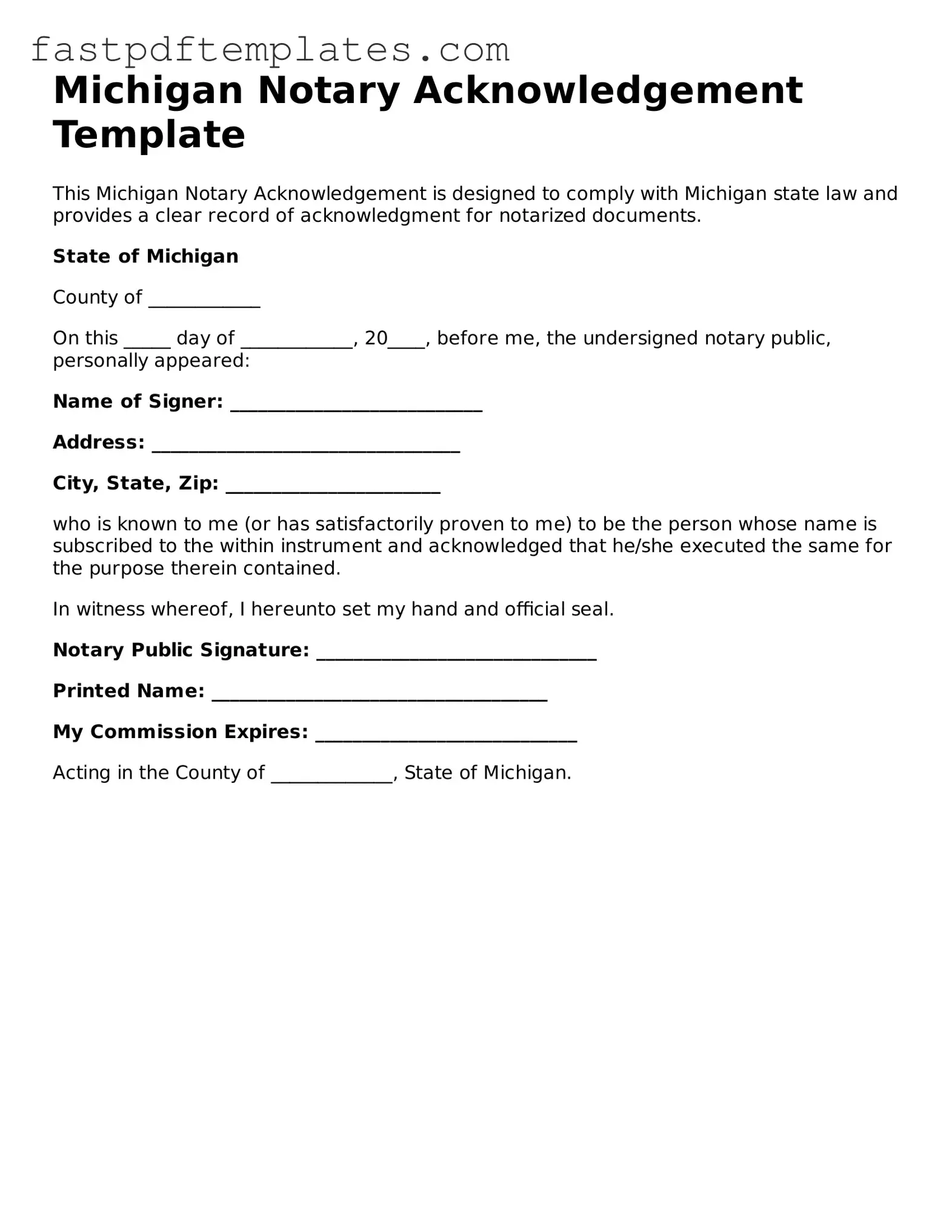Michigan Notary Acknowledgement Template
This Michigan Notary Acknowledgement is designed to comply with Michigan state law and provides a clear record of acknowledgment for notarized documents.
State of Michigan
County of ____________
On this _____ day of ____________, 20____, before me, the undersigned notary public, personally appeared:
Name of Signer: ___________________________
Address: _________________________________
City, State, Zip: _______________________
who is known to me (or has satisfactorily proven to me) to be the person whose name is subscribed to the within instrument and acknowledged that he/she executed the same for the purpose therein contained.
In witness whereof, I hereunto set my hand and official seal.
Notary Public Signature: ______________________________
Printed Name: ____________________________________
My Commission Expires: ____________________________
Acting in the County of _____________, State of Michigan.
